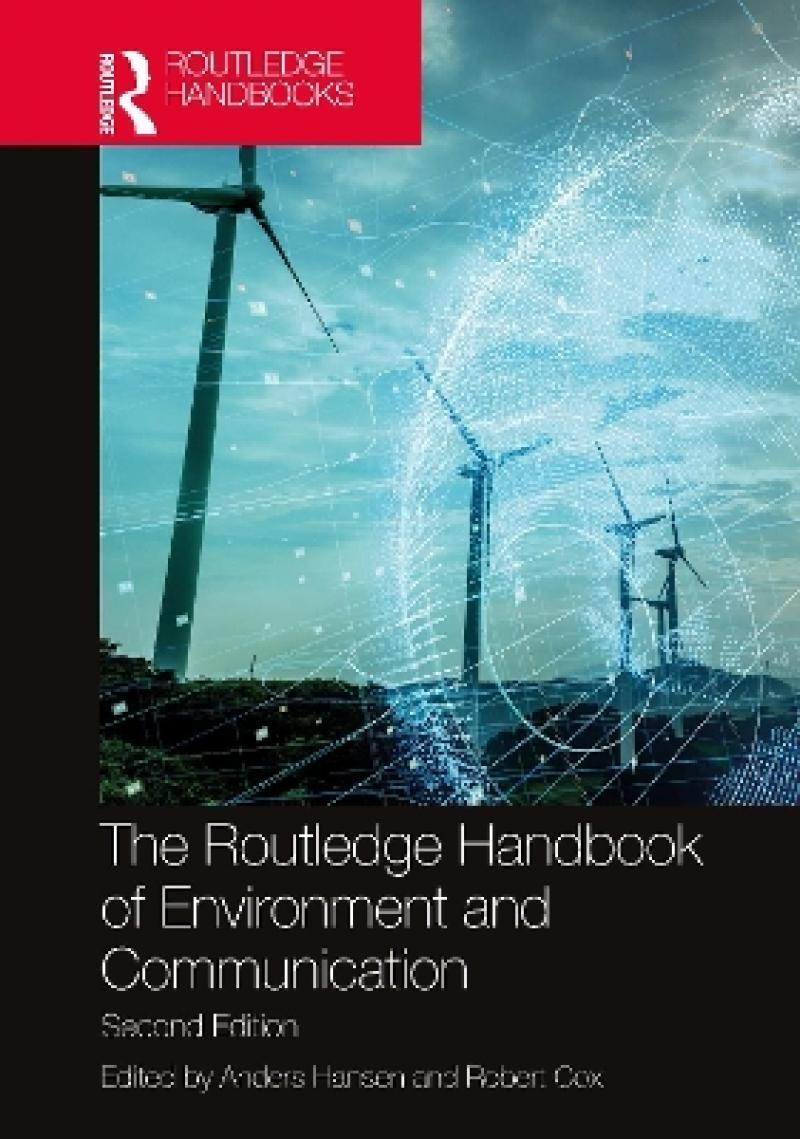<p>"Hansen and Cox’s updated Handbook powerfully illustrates the importance of environmental communication scholarship and practice in contributing to societal change. Reflecting upon the field’s achievements thus far, the editors and multiple authors of this collection also help (re)orient its future directions, making issues of justice a critical and necessary focus of its work."</p><p><strong>Julie Doyle,</strong> <em>Professor of Media and Communication, University of Brighton, UK.</em></p>
This revised and fully updated second edition of the Routledge Handbook of Environment and Communication provides a state-of-the-art overview of environmental communication theory, practice and research.
The momentous changes witnessed in the politics of the environment as well as in the nature of media and public communication in recent years have made the study and understanding of environmental communication ever more pertinent. This is reflected in this second edition, including a number of exciting new chapters concerned with: environmental communication in an age of misinformation and fake news; environmental communication, community and social transformation; environmental justice; and advances in methods for the analysis of mediated environmental communication.Signalling the key dimensions of public mediated communication, the Handbook is organised around five thematic parts:
- the history and development of the field of environmental communication research,
- the sources, communicators and media professionals involved in producing environmental communication,
- research on news, entertainment media and wider cultural representations of the environment,
- the social and political implications of environmental communication,
- and the likely future trajectories for the field.
Written by leading scholars in the field, this authoritative text is a must for scholars and students of environmental communication across multiple subject areas, including environmental studies, media and communication studies, cultural studies and related disciplines.
This revised and fully updated second edition of the Routledge Handbook of Environment and Communication provides a state-of-the-art overview of environmental communication theory, practice and research.
Introduction PART I Environment, Communication and Environmental Communication: emergence and development of a field 1 Emergence and growth of the field of environmental communication 2 Social science approaches to environment, media and communication 3 Discourse and rhetorical analysis approaches to environment, media, and communication 4 Environmental Justice: a third pillar of environmental communication research 5 The place of the environment in the field of communication for development and social change PART II Producing environmental communication: sources, communicators, media and media professionals Sources/communicators 6 When environmental scientists go public 7 The media/communication strategies of environmental NGOs 8 Managing the climate apocalypse: Think tanks, policy planning groups and the corporate capture of sustainable development 9 Protests, publics and participation (still in an environmental age) 10 Insights and opportunities in public participation practice: applying collaborative learning in environmental policy decision situations Media and media professionals 11 Environmental reporters in a time of change 12 News organisation(s) and the production of environmental news 13 Improving environmental reporting: Forging synergies with citizen science and citizen journalism 14 Transformative Journalisms: How the global ecological crisis is transforming journalism PART III Covering the environment: news media, entertainment media and cultural representations of the environment News media 15 Big data and computational methods: methodological advances for analyzing mediated environmental communication 16 Communicating Climate Change in the Anthropocene: The dynamic cultural politics of climate change news coverage and social media around the world 17 Environmental communication, global trade and being here 18 An introduction to misinformation and environmental communication 19 Online climate denialism: eco-systems and echo chambers Entertainment media, advertising and cultural representations 20 Representations of the environment on television, and their effects 21 Cartoons and the environment 22 Cinema, ecology and environment 23 Nature, environment and advertising 24 Cultural representations of the environment beyond mainstream media PART IV Social and political implications of environmental communication 25 Mapping media’s role in environmental thought and action 26 Public perceptions of climate change and their variation across audiences 27 Engaging diverse audiences with climate change: message strategies for Global Warming's Six Americas 28 Communication and Community Transformation 29 (Dis)placed communication, solastalgia, and a climate change diaspora PART V Conclusions: future trajectories of environment and communication 30 Beyond the post-political zeitgeist 2.0 31 Speaking to the heart of the matter: the emergence of a humanistic environmental communication
Produktdetaljer
Om bidragsyterne
Anders Hansen is Associate Professor in the School of Media, Communication and Sociology, University of Leicester, UK.
Robert Cox (PhD University of Pittsburgh) is Professor Emeritus in the Department of Communication and the Curriculum in the Environment at the University of North Carolina at Chapel Hill.

